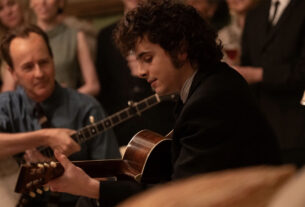There has been a lot of recent discussion about the need for Jewish self-defense. Several books and op-eds have been published advocating for American Jews to start waking up and taking this issue a lot more seriously. The contributions to this new literature come as violent antisemitic attacks continue to mount every week. Some of these include Hesh Kestin’s “The Wrong Jew: Defeating Those Who Want Us Dead,” Benjamin Kerstein’s “Self-Defense: A Jewish Manifesto,” and my own, “The Armed Jew: The Case for Jewish Gun Ownership.” All of these were published recently by Wicked Son. There have also been several op-eds in major Jewish publications, such as David Bernstein’s piece titled, “Jews and Guns: Time for a Reckoning?,” published here in The Journal on Aug. 25.
In “Self-Defense: A Jewish Manifesto,” Kerstein writes, “American Jewish life is highly organized, with an alphabet soup of groups involved in every aspect of life, including fighting antisemitism. There are combative organizations dedicated to different aspects of the battle, from lawsuits to billboards. But there is currently no organized, nationwide movement dedicated to the cause that is at the true heart of the matter: self-defense.” (pp. 9-10)
Kerstein’s book is important and timely and I highly recommend it. However, I need to correct the false assumption being made in that excerpt. There are indeed Jewish organizations for self-defense. Some of them are private regional and even national shooting clubs and training academies that are dedicated to preparing Jews for firearms proficiency. Others are armed security and intelligence sharing networks that work across Jewish communities that interface with federal law enforcement agencies.
It is vitally important that we not forget that these organized resources exist. They are the necessary starting points from which we can build a greater and more efficient national movement even beyond what is already in place.
On the West Coast, there is an organization called Magen Am (“Shield of the People), led by Rabbi Yossi Eilfort. Its website describes its mission by saying, “We train and empower secure Jewish communities, so they may live and practice in peace.” In the Pennsylvania Catskills is Yonatan Stern’s Cherev Gidon Israeli Tactical Training Academy. There are also organizations called “Glocks and Barrels,” “Guns and Moses,” “Jews Can Shoot,” and now “Lox and Loaded,” which has many chapters in cities across the United States and rapidly expanding into more locations.
In Northeast Ohio, where I live, there is a new 501(c)(3) nonprofit organization of which I am on the Board of Directors, called the High Value Training Academy (HVTA). It’s led by a very eager and enthusiastic Jewish NRA-certified instructor named Jeffrey Goldstein, whose personal story and passion for teaching Jews to shoot I tell in my book, “The Armed Jew.” If you live in the Cleveland, Akron or Youngstown areas, HVTA raises money to offer discounted full day courses and no-cost small group lessons at nearby gun ranges.
As for organizations that work with the government, the Secure Communities Network (SCN) has been in place since 2004. Having come a long way since its inception, SCN has greatly improved its intelligence gathering processes under the directorship of Michael Masters, whom the Jewish Telegraph Agency has dubbed the Jewish community’s “anti-terrorism czar.” There is also the Community Security Service (CSS) headed by Richard Priem. Without revealing too much of what I know about SCN’s and CSS’ specific achievements, I can only say that this nexus of Jewish communities and law enforcement agencies across the country has indeed thwarted many violent assaults on synagogues, JCCs and day schools before they happened.
I also want to commend David Bernstein for writing a very important piece to encourage more progressive Jews to start engaging in a new conversation about gun ownership. My only disagreement with him, however, is that we should not be supporting a national gun registry or red flag laws. The former would not be good for Jews, as gun registries have historically led to gun confiscations by oppressive governments. The latter policy, reg flag laws, wrongly deny people their Second Amendment right to bear arms without due process. Moreover, his claim that “guns kept in the home are 43 times more likely to kill a family member than an assailant” is a debunked statistic that exacerbates the already deep problem of hoplophobia (fear of guns) among Jews.
Those of us committed to promoting Jewish self-defense must continue writing and speaking out. But more than engaging in this conversation, Jewish communities need to start acting. In the last chapter of my book “The Armed Jew,” I provide many suggestions as to how our communities that are not doing so already could start putting self-protection with firearms into coordinated effect.
The Jewish Diaspora does indeed have organized apparatuses to build upon. If we are going to promote our self-defense, we must recognize what is currently available to us already as the foundation of a much more efficient movement.
Adam L. Fuller, PhD is Clayman Professor of Jewish Studies and Associate Professor of Political Science at Youngstown State University.




